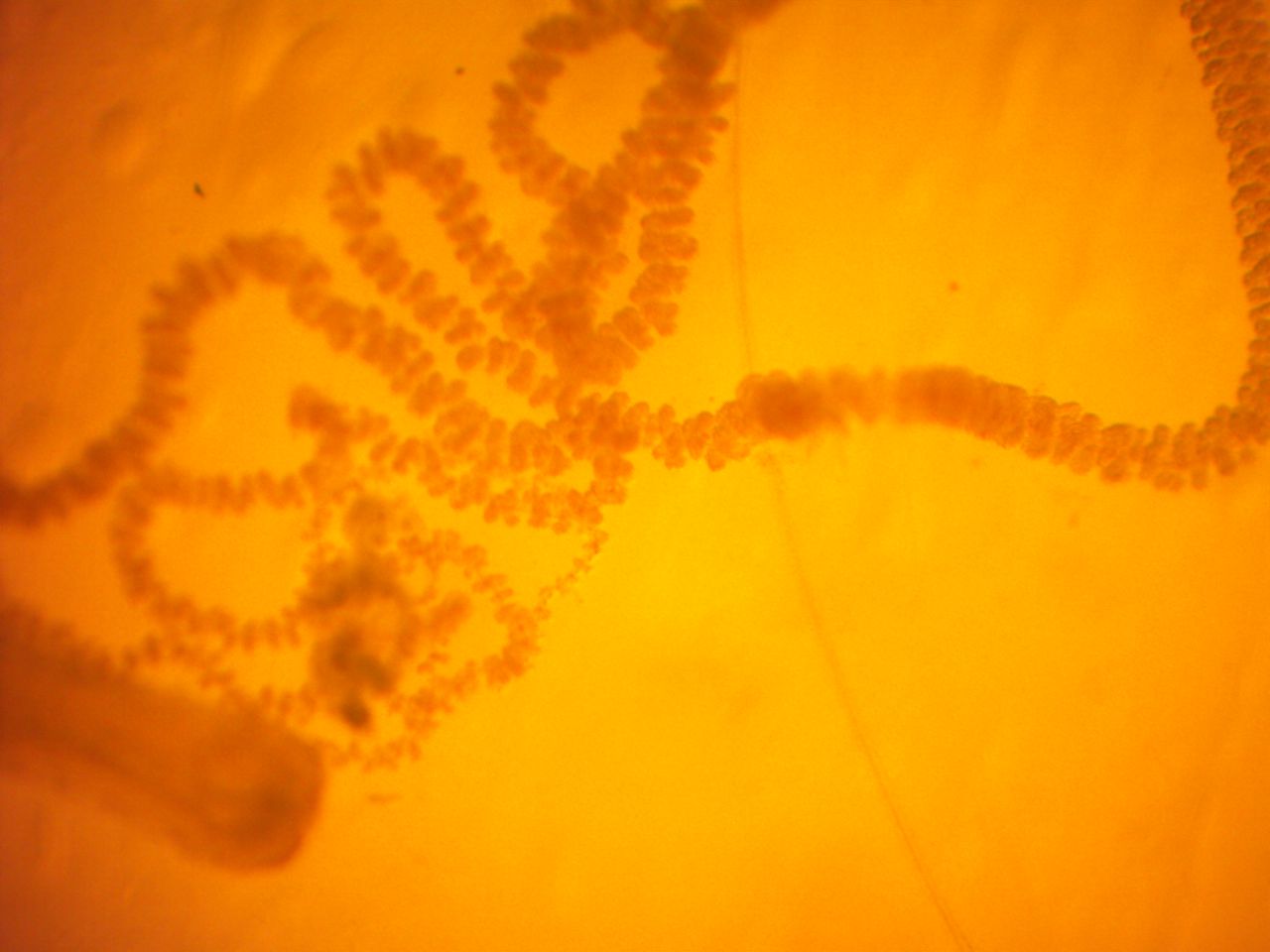Sarsia tubulosa (M. Sars, 1835)Common name(s): Clapper hydroid, clapper medusa, clapper hydromedusa, thimble jellyfish |
|
| Synonyms: Syncoryne mirabilis | 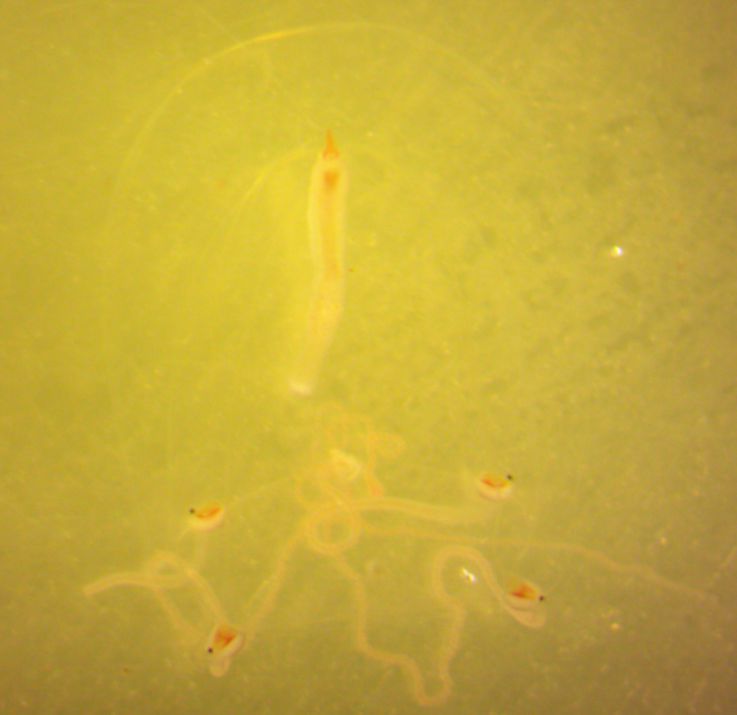 |
|
Phylum Cnidaria
Order Hydroida
Suborder Athecata
(Anthomedusae)
Family Corynidae
|
|
| Sarsia tubulosa. 8 mm long, captured at night at Sharpe Cove dock by Jamie Anderson Fields. Note the 4 tentacles, each connected to its own tentacular bulb which also has a black ocellus. | |
| (Photo by: Dave Cowles, August 2025) | |
Description: This hydromedusa has four tentacles originating at the margin of the bell, each of which arises from a separate tentacle bulb. Each bulb also contains an ocellus. The height of the bell is only slightly greater than the diameter, and it has no marginal vesicles. The apex of the bell is rounded not pointed (photo). The tentacles have swollen batteries of nematocysts all along their length (photo). It has a highly extensible manubrium which can extend out to at least the height of the bell beyond the bell margin. The gonad of this species is a thick, bumpy growth wrapped around most of the manubrium, but it does not extend clear to the top of the manubrium (photo photo). Mostly colorless but may have blue, red, green, or orange on the manubrium, tentacles, or tentacle bulbs. Bell up to 4 cm tall. This species may be introduced.
How to Distinguish from Similar Species:Sarsia princeps is rare, conical, and has height up to 2x the diameter. Sarsia viridis has iridescent green on its manubrium and tentacle bulbs.
Geographical Range: Bering Sea to central CA
Depth Range: Epipelagic (near the surface)
Habitat: Pelagic
Biology/Natural
History: Sarsia
eat mainly crustaceans.
| Return to: | |||
| Main Page | Alphabetic Index | Systematic Index | Glossary |
References:
Dichotomous Keys:Carlton, 2007
Kozloff, 1987, 1996
General References:
Lamb
and Hanby, 2005
Wrobel
and Mills, 1998
Scientific Articles:
Web sites:
General Notes and Observations: Locations, abundances, unusual behaviors:
The tentacles
are covered with batteries of nematocysts.
Photo by Dave Cowles, August 2025

The distal end of the manubrium
is covered with bumps, which apparently are the gonads. Photo by Dave
Cowles,
August 2025
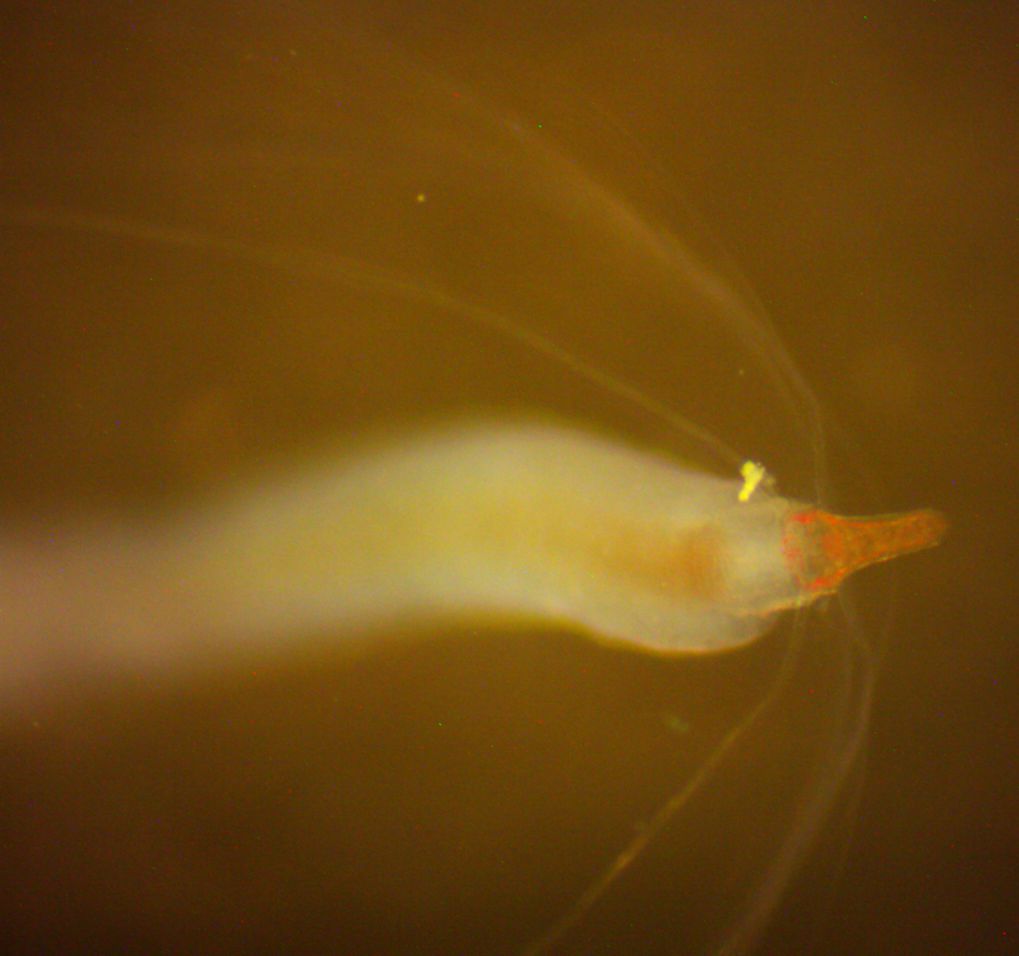
The apex of the subumbrella, where the manubrium
connects, has a small, orange projecting cone. Such a conelike stomach
is found in S.
tubulosa.
Also, notice that the bumpy gonad completely wraps around the manubrium
except for a short space just under the subumbrella.
This is also characteristic of S.
tubulosa. The four radial
canals are also visible. The exumbrella
is out of sight to the right but the conelike stomach does not project
out to the exumbrella.
Photo by Dave Cowles, August 2025
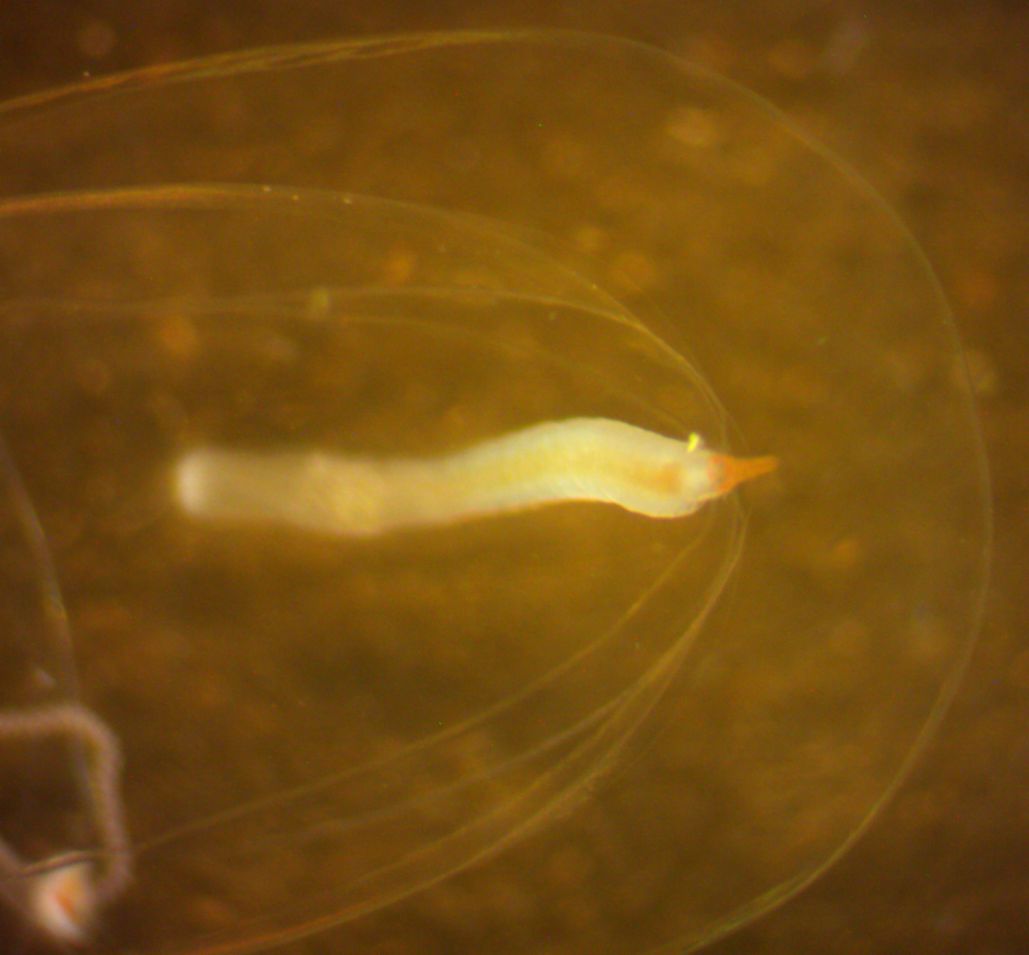
This view, zoomed out a bit from the view above, shows the exumbrella
out beyond the orange stomach. Note also that the exumbrella
apex is rounded as in S.
tubulosa,
not pointed.
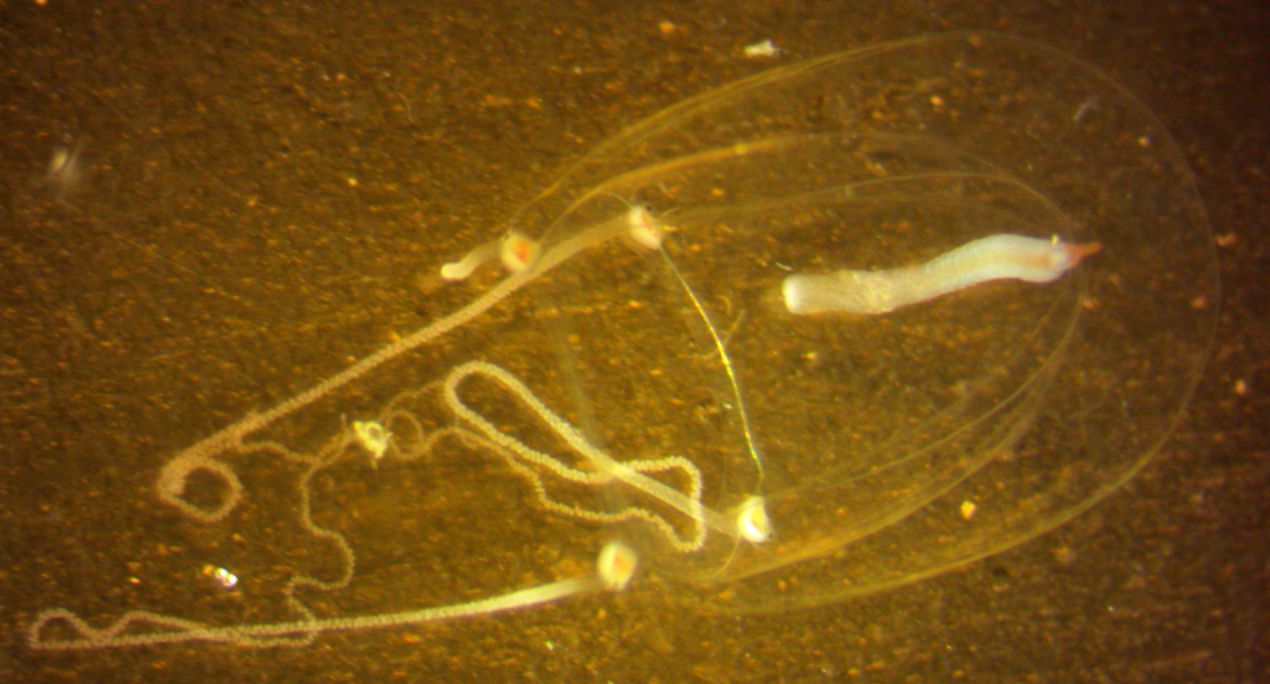
This whole view shows the animal attatched to a substrate by its 4
tentacles.
The tentacles
are extremely sticky, likely due to discharge of nematocysts.
Note the orange on the tentacle
bulbs. Photo by Dave Cowles, August 2025
Authors and Editors
of Page:
Dave Cowles (2025): Created original page
CSS coding for page developed by Jonathan Cowles
Salish Sea Invertebrates web site provided courtesy of Walla
Walla University
